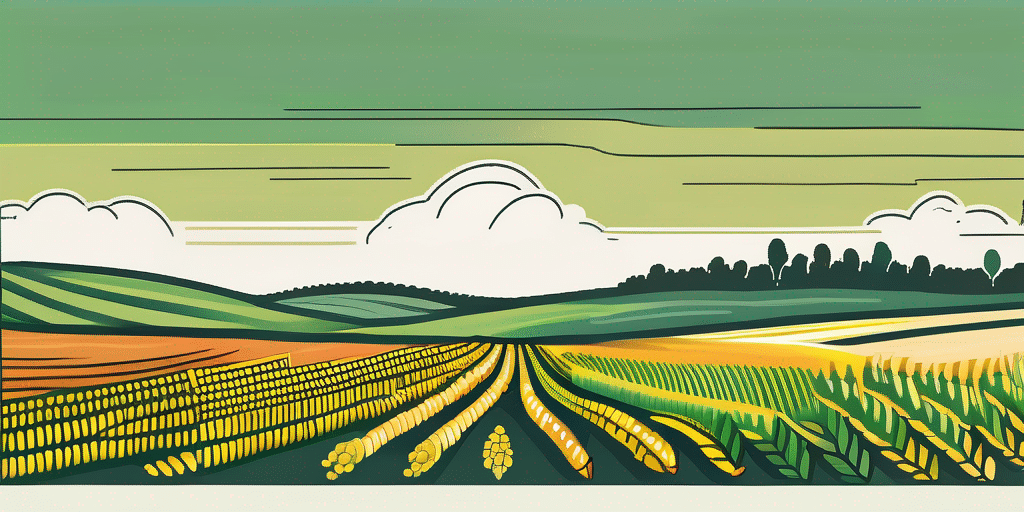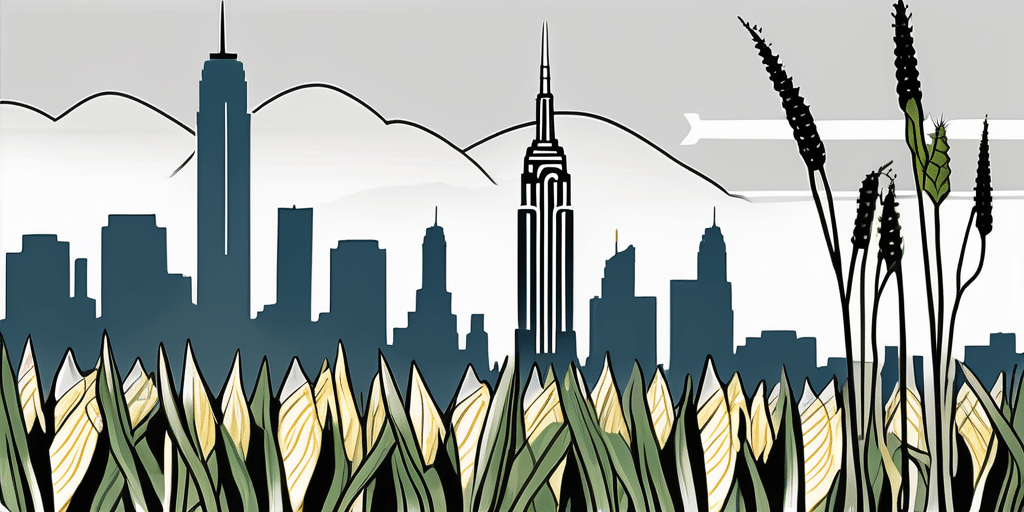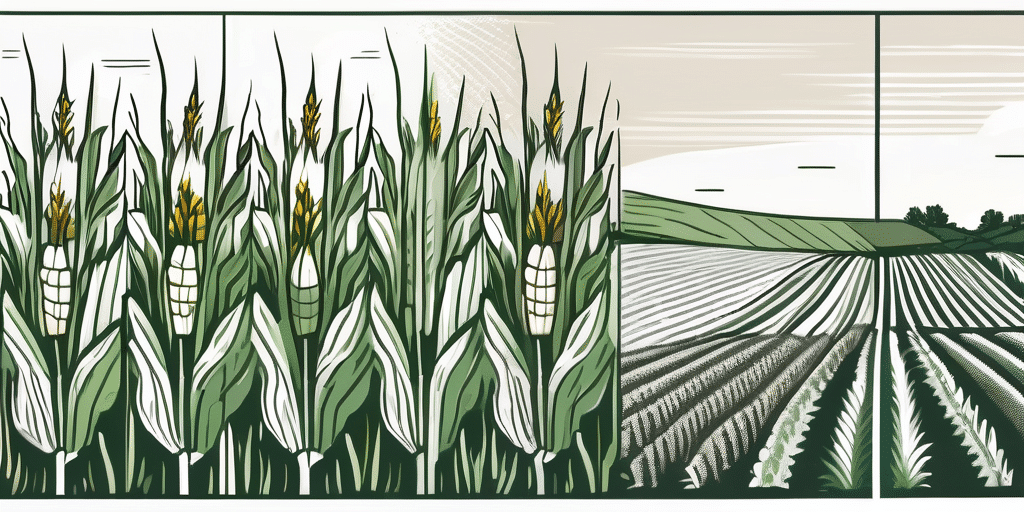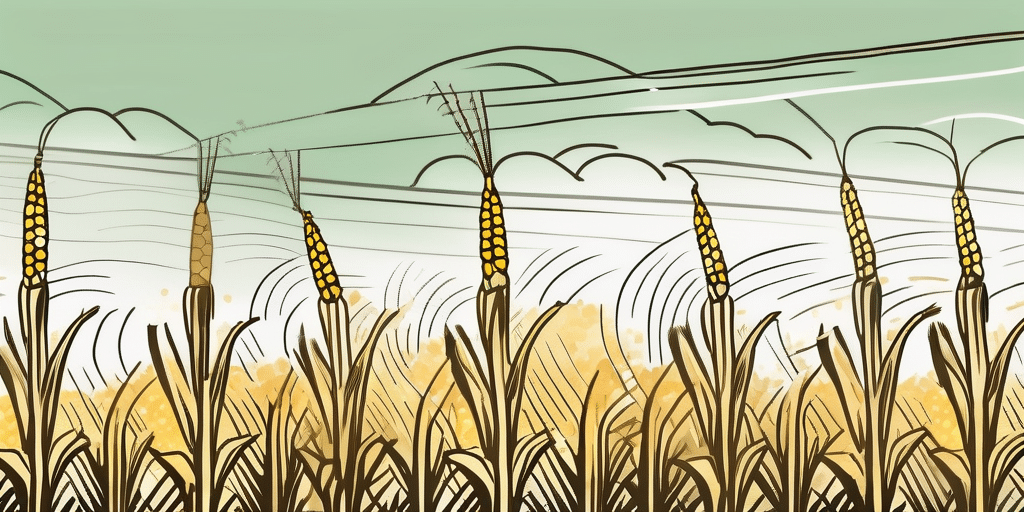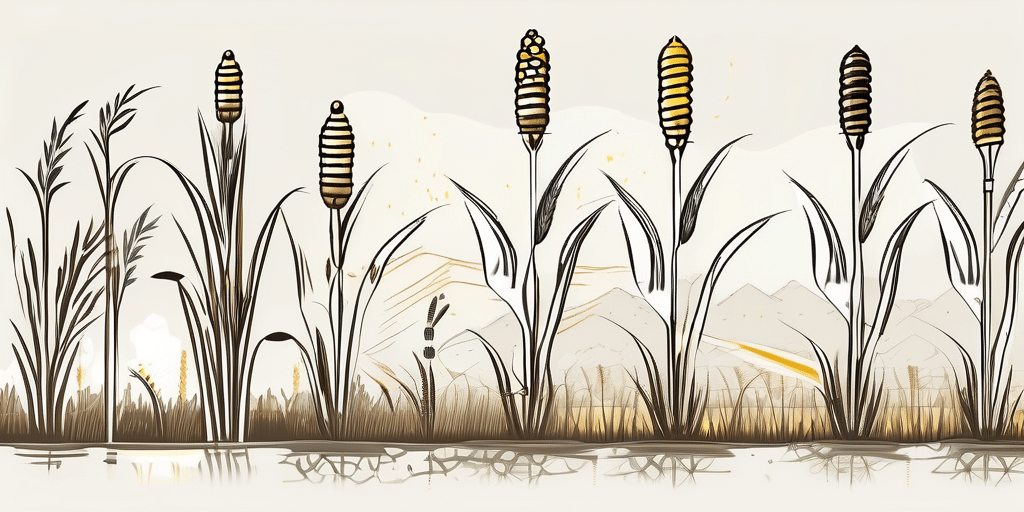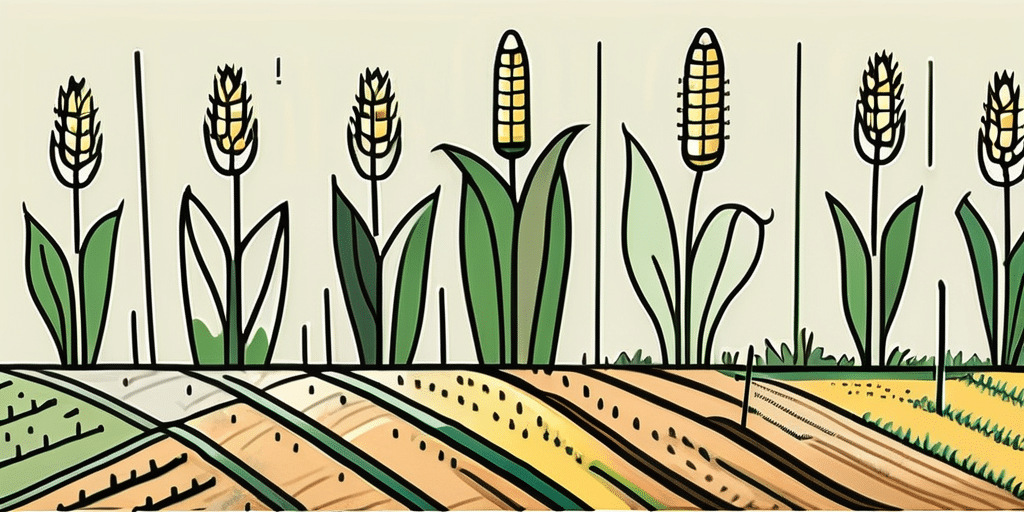Welcome to our article on how and when to harvest Serendipity Corn! Whether you’re a seasoned farmer or just starting out, understanding the growth cycle and recognizing the right time to harvest is crucial for achieving the best quality corn. In this guide, we’ll walk you through the planting season, key growth stages, signs of maturity, the harvesting process, post-harvest handling, and common mistakes to avoid. So let’s dive in and learn how to make the most of your Serendipity Corn harvest!
Understanding the Growth Cycle of Serendipity Corn
Before we delve into the specifics of harvesting Serendipity Corn, it’s important to have a good grasp of its growth cycle. This will help you make informed decisions at each stage of the process, leading to a successful harvest.
The Planting Season: Getting Started
The planting season for Serendipity Corn usually begins in the spring when soil temperatures reach around 50°F (10°C). Preparing the soil by tilling and adding compost or fertilizer can greatly improve the crop’s chances of thriving. When planting, keep in mind that corn is a warm-season crop, so it needs full sun and well-drained soil to produce optimal results. Aim to plant the seeds in rows, spacing them about 8-12 inches apart to allow proper air circulation and room for growth.
Once the seeds are in the ground, it’s time to wait for the magic to happen. As the days get longer and the temperature rises, you’ll start to see tiny green shoots emerging from the soil. It’s a thrilling sight, knowing that your Serendipity Corn is on its way to becoming a bountiful harvest.
Key Growth Stages of Serendipity Corn
As your Serendipity Corn begins to grow, it will go through several key growth stages. These stages are important markers when determining the appropriate time for harvest. Let’s take a closer look:
- Germination: This is when the seeds sprout and the root system begins to establish itself. It’s a delicate time for the young plants, as they rely on moisture and warmth to kickstart their growth. As a diligent farmer, you can ensure their success by providing them with the right conditions, such as regular watering and protection from extreme weather.
- Vegetative Stage: During this stage, the plant grows leaves and develops a strong root system. It’s a period of rapid growth, as the plant absorbs nutrients from the soil and converts them into energy. You’ll notice the leaves becoming larger and more vibrant, a sign that your Serendipity Corn is thriving under your care.
- Tassel and Silk Stage: This is when the plant starts to produce the tassel (male flower) and silk (female flower), indicating that pollination can occur. It’s a crucial stage for the development of ears, as the tassels release pollen that lands on the silks, leading to fertilization. Nature’s intricate dance unfolds, and you can witness the miracle of life happening right in your cornfield.
- Ear Formation Stage: As pollination takes place, ears of corn begin to form on the stalks. It’s a remarkable sight to see the tiny ears emerging, each one a potential source of nourishment and delight. The plants will continue to grow taller, providing support for the developing ears and ensuring they receive ample sunlight and nutrients.
- Kernel Fill Stage: During this stage, the kernels on the ear fill out and mature. It’s a time of rapid growth and transformation, as the kernels plump up with starches and sugars, becoming the delicious morsels we all love. The plants will require regular watering and nutrient-rich soil to support this final burst of growth, ensuring that each kernel reaches its full potential.
- Maturity Stage: The plant reaches full maturity when the kernels have reached their maximum size and the ears feel firm to the touch. It’s a moment of triumph for the diligent farmer, as the culmination of weeks of care and attention is finally realized. The Serendipity Corn is now ready to be harvested, bringing joy and nourishment to all who partake in its bounty.
Understanding the growth cycle of Serendipity Corn is not just about knowing when to harvest. It’s about appreciating the intricate journey that each plant undertakes, from a tiny seed to a towering stalk laden with golden ears. As you tend to your cornfield, take a moment to marvel at the wonders of nature and the remarkable process that brings food to our tables.
Recognizing the Right Time for Harvest
Harvesting Serendipity Corn at the right time is crucial for achieving the ideal flavor and texture. Here are some key factors to consider:
Before you embark on the journey of harvesting your Serendipity Corn, it’s essential to understand the intricacies involved in determining the perfect moment for picking. The art of harvesting corn goes beyond mere visual cues and delves into a sensory experience that requires finesse and attention to detail.
Signs of Maturity in Serendipity Corn
When it comes to determining the maturity of your Serendipity Corn, there are a few key signs to look out for:
- Color: The husks of mature corn will have a deep green color.
- Texture: Feel the kernels through the husk – they should be plump and firm.
- Silk: The silk at the top of the ear should be brown and dry.
However, the journey to harvest perfection doesn’t end with visual assessments alone. To truly capture the essence of Serendipity Corn at its peak, one must also pay attention to the subtle nuances that can only be detected through a combination of touch, smell, and even sound.
Weather Conditions and Harvest Timing
In addition to visual signs of maturity, it’s important to consider weather conditions when deciding on the right time to harvest. Corn should be harvested during a period of good weather, preferably with dry conditions. Rain or high humidity can increase the risk of mold development or spoilage. Aim to harvest in the early morning when temperatures are cooler and moisture levels are lower, as this can help preserve the freshness of the corn.
As the sun rises over the cornfields, casting a golden hue on the swaying stalks, the atmosphere is imbued with a sense of anticipation. The gentle rustling of the leaves in the morning breeze serves as a reminder of the delicate balance between nature’s timing and human intervention in the age-old ritual of harvesting.
The Harvesting Process Explained
Now that you know when to harvest your Serendipity Corn, let’s walk through the step-by-step process of bringing in your bountiful crop!
Harvesting Serendipity Corn is a rewarding task that requires attention to detail and the right tools. By following a few simple steps, you can ensure a successful harvest that will provide you with delicious corn for meals and snacks.
Tools Needed for Corn Harvesting
Before you begin harvesting your Serendipity Corn, make sure you have the following tools on hand:
- Sharp knife or corn cutter: This essential tool will enable you to cleanly cut the corn stalks without damaging the ears.
- Bins or baskets: Having bins or baskets ready will make it easy to collect the harvested ears of corn and keep them organized.
- Gloves: Protect your hands from the rough corn husks by wearing gloves while harvesting. This will also help prevent any skin irritation.
- Wheelbarrow: Consider using a wheelbarrow to transport your harvested corn if you have a large crop. This will save you multiple trips back and forth.
Step-by-Step Guide to Harvesting
Follow these steps to harvest Serendipity Corn with ease:
- Check for maturity: Ensure that the corn is fully mature by checking for the visual signs mentioned earlier. Mature corn will have plump kernels and dry, brown silk.
- Get your tools ready: Gather the necessary tools – a sharp knife or corn cutter, bins or baskets, gloves, and a wheelbarrow if needed.
- Cut the stalks: Position yourself close to the base of the stalk and carefully cut each ear of corn, leaving a few inches of stalk attached. This ensures that the corn remains fresh for longer.
- Collect the corn: Place the harvested ears of corn into the bins or baskets, being careful not to damage the kernels. Arrange them gently to avoid bruising.
- Dispose of waste: Remove any excess leaves or husks and dispose of them properly. Consider composting these organic materials to enrich your garden soil.
- Store your harvest: After harvesting, store your corn in a cool, dry place to maintain its freshness. Corn can be stored in the refrigerator for a few days or frozen for longer preservation.
Post-Harvest Handling and Storage
Once you’ve successfully harvested your Serendipity Corn, proper post-harvest handling and storage are essential to maintain its quality and flavor:
After the hard work of cultivating and harvesting your Serendipity Corn, it’s crucial to ensure that it stays fresh and delicious for as long as possible. Proper post-harvest handling and storage techniques can make all the difference in preserving the flavor and nutritional value of your corn.
How to Properly Store Serendipity Corn
Follow these tips for optimal corn storage:
- Keep it cool: Store your corn at temperatures between 32°F to 40°F (0°C to 4°C) to help slow down the deterioration process.
- Husk intact: Keep the husks on the corn until you’re ready to cook or eat it. The husks act as a natural protective layer.
- Avoid moisture: Moisture can lead to mold development, so store your corn in a dry environment.
Storing your Serendipity Corn in a cool environment is crucial to maintaining its freshness. The ideal temperature range of 32°F to 40°F (0°C to 4°C) helps slow down the natural deterioration process, preserving the corn’s flavor and texture. Additionally, keeping the husks intact until you’re ready to use the corn serves as a protective barrier, preventing exposure to air and helping retain moisture within the kernels. This simple step can make a significant difference in the quality of your corn over time.
Tips for Extending Corn Shelf Life
If you want to prolong the shelf life of your Serendipity Corn, consider these suggestions:
- Blanch and freeze: Blanching the corn before freezing can help maintain its taste and texture for up to 12 months.
- Canning: Preserve the flavor of your corn by canning it in jars. This method can extend its shelf life for up to 18 months.
For those looking to extend the shelf life of their Serendipity Corn even further, exploring preservation methods such as blanching and freezing or canning can be highly beneficial. Blanching the corn before freezing helps lock in its natural flavors and textures, allowing you to enjoy the taste of freshly harvested corn for up to 12 months. On the other hand, canning your corn in jars not only preserves its flavor but also extends its shelf life for an impressive 18 months. These techniques offer a convenient way to enjoy your homegrown corn well beyond the harvest season.
Common Mistakes to Avoid When Harvesting Serendipity Corn
While harvesting Serendipity Corn can be a rewarding experience, there are a few common mistakes to avoid:
Harvesting Too Early or Too Late
Harvesting corn too early can result in immature kernels and a starchy taste. On the other hand, waiting too long can lead to overripe corn with tough kernels. Keep a close eye on the signs of maturity, such as the color of the silks and the feel of the kernels when squeezed, and harvest at the right time for optimal flavor and texture. Remember, Serendipity Corn is at its best when harvested at the peak of ripeness, so timing is crucial.
Improper Handling and Storage Practices
Incorrect handling and storage can greatly affect the quality and shelf life of your Serendipity Corn. Always use sharp tools to prevent damage to the kernels, and follow the proper post-harvest storage techniques we discussed earlier. After harvesting, it’s essential to remove the husks and silk carefully to avoid bruising the kernels. Additionally, store the corn in a cool, dry place to maintain its freshness and flavor for as long as possible.
By following these guidelines and taking the necessary precautions, you’ll be able to enjoy the delicious taste of Serendipity Corn at its peak. Remember, the care you put into harvesting and storing your corn will be reflected in its flavor on your plate. Happy harvesting!
Join the How to Grow Everything Community
Ready to transform your gardening skills and cultivate the garden of your dreams? Subscribe for free to How to Grow Everything and unlock a treasure trove of personalized gardening advice tailored to your location, grow zone, and experience level. Our family is dedicated to helping you grow not just Serendipity Corn, but everything your green thumb desires. With exclusive tips, special offers, and the best gardening deals delivered straight to your inbox, you’ll be equipped to nurture your garden into a bountiful paradise. And don’t worry, we keep it 100% free and free of spam. Subscribe now and join a community where growth and success are always in season!

